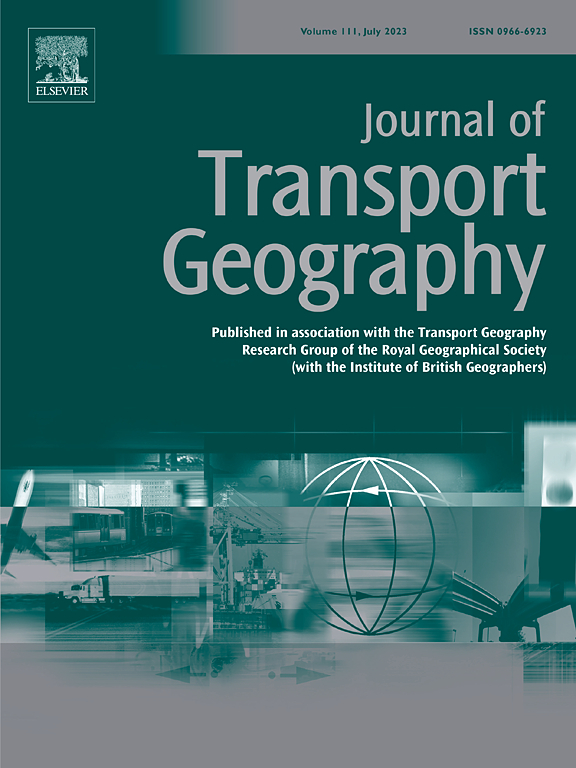How emerging time-use patterns explain travel behaviour: A systematic review
IF 6.3
2区 工程技术
Q1 ECONOMICS
引用次数: 0
Abstract
Many studies have investigated how digital engagement, new ways of working, and automated vehicles (AVs), are reshaping travel behaviour. However, their findings are frequently divergent or inconclusive. This work proposes that three emerging time-use patterns (TUPs) – multitasking, flexibility and fragmentation of activities – can help to explain the divergent results. To assess this notion, we systematically investigate the mediating role of TUPs in the relationship between digital engagement/telework/AVs and four key travel outcomes (trip frequency, travel distance, mode choice, and value of travel time). Using empirical data from 2019 to 2024, we find that TUPs can be seen as a mediator in shaping travel outcomes. For instance, when digital activities or telework increase activity fragmentation, they are associated with increased trip frequency. When digital activities or telework have been shown to increase flexibility, that has resulted in lower trip frequency. We notice that a potential reason for divergent results is that different configurations of digital engagement, telework, and AVs correspond to distinct TUPs, leading to opposite travel effects. We recommend that future studies integrate TUPs into assessments of travel behaviour change to better interpret causal relationships and address inconclusive findings.
新出现的时间使用模式如何解释旅行行为:系统回顾
许多研究调查了数字参与、新的工作方式和自动驾驶汽车(AVs)如何重塑旅行行为。然而,他们的发现往往是分歧的或不确定的。这项工作提出了三种新出现的时间使用模式(up)——多任务、灵活性和活动碎片化——可以帮助解释不同的结果。为了评估这一概念,我们系统地调查了up在数字参与/远程工作/自动驾驶与四个关键旅行结果(旅行频率、旅行距离、模式选择和旅行时间价值)之间的关系中的中介作用。利用2019年至2024年的经验数据,我们发现up可以被视为塑造旅游结果的中介。例如,当数字活动或远程工作增加了活动的碎片化时,它们与旅行频率的增加有关。当数字活动或远程办公被证明可以增加灵活性时,这就导致了更低的出差频率。我们注意到,导致不同结果的一个潜在原因是,数字参与、远程办公和自动驾驶汽车的不同配置对应于不同的up,导致相反的旅行效果。我们建议未来的研究将up整合到旅行行为变化的评估中,以更好地解释因果关系并解决不确定的发现。
本文章由计算机程序翻译,如有差异,请以英文原文为准。
求助全文
约1分钟内获得全文
求助全文
来源期刊

Journal of Transport Geography
Multiple-
CiteScore
11.50
自引率
11.50%
发文量
197
期刊介绍:
A major resurgence has occurred in transport geography in the wake of political and policy changes, huge transport infrastructure projects and responses to urban traffic congestion. The Journal of Transport Geography provides a central focus for developments in this rapidly expanding sub-discipline.
 求助内容:
求助内容: 应助结果提醒方式:
应助结果提醒方式:


